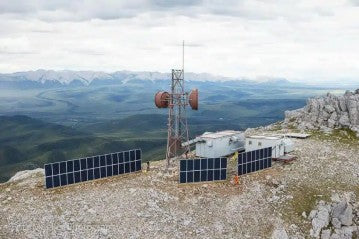
Solar power systems have gained popularity in recent years due to their environmental and financial benefits. One of the key components of a solar power system is the sloar charge controller, which regulates the flow of electricity from the solar panels to the battery bank. But how far can solar panels be from the charge controller? In this blog post, we will explore the factors that affect the distance between solar panels and charge controllers, the maximum distance recommended, and ways to extend the distance for optimal performance.
Factors that Affect the Distance between Solar Panels and Charge Controller
The distance between solar panels and charge controllers is affected by several factors, including cable size and type, voltage drop, and temperature.
1. Cable Size and Type
The size and type of cable used to connect solar panels to the charge controller can affect the distance between them. If the cable is too small, it can cause voltage drop and reduce the efficiency of the solar power system. The type of cable also matters, with copper being the most common due to its low resistance and high conductivity.
2. Voltage Drop
Voltage drop occurs when electricity travels through a cable, and some of the power is lost due to resistance. As the distance between solar panels and charge controllers increases, voltage drop also increases, reducing the efficiency of the solar power system.
3. Temperature
Temperature affects the power output of solar panels, with high temperatures reducing efficiency. As the temperature increases, the voltage of the solar panels decreases, leading to a higher voltage drop and reduced efficiency.
Maximum Distance between Solar Panels and Charge Controller
The maximum distance between solar panels and charge controllers depends on several factors, including the voltage of the solar panels, the cable size and type, and the charge controller's maximum input voltage. The general rule of thumb is that solar panels should be no more than 100 feet away from the charge controller.
Real-world scenarios show that the maximum distance between solar panels and charge controllers can vary significantly. For example, if the solar panels have a high voltage and the cable is large, the distance can be extended to up to 300 feet. However, if the solar panels have a low voltage and the cable is small, the maximum distance will be much less, around 50 feet.
Ways to Extend Distance
There are several ways to extend the distance between solar panels and charge controllers, including using larger cables, reducing voltage drop, or using Maximum Power Point Tracking (MPPT) charge controllers.
1. Using Larger Cables
Using larger cables can reduce voltage drop and extend the distance between solar panels and charge controllers. The size of the cable should be chosen based on the voltage of the solar panels and the distance between them.
2. Reducing Voltage Drop
To reduce voltage drop, you can use a step-up transformer to increase the voltage of the solar panels before sending it to the charge controller. This reduces the current and, in turn, reduces voltage drop.
3. Using MPPT Charge Controllers
MPPT charge controllers are designed to maximize the power output of solar panels by adjusting the voltage and current to match the battery bank's requirements. They are more efficient than traditional PWM charge controllers and can extend the distance between solar panels and charge controllers.
Conclusion
Understanding the maximum distance between solar panels and charge controllers is crucial for the optimal performance and efficiency of a solar power system. Factors such as cable size and type, voltage drop, and temperature affect the distance, and the general rule of thumb is that solar panels should be no more than 100 feet away from the charge controller.
However, this can be extended by using larger cables, reducing voltage drop, or using MPPT charge controllers. If you are unsure about the appropriate distance for your solar power system, consult with a professional solar installer or engineer for advice.

0 comments